FEATURING
Stories
The Kumbh Mela: A Rarer Taste of India
- Details
- Written by George L. Nitti George L. Nitti
- Category: Travel Travel
I've continued to be drawn to the art of photographer John Battaglino. I have been to his studio and home in Warwick NY on several occasions, where I've been given first rate hospitality - a tour of his studio, several wonderful lunches, access to his cultural library of books and videos, and priviledge to several conversations about his work. Most recently, John returned from a three week sojourn to Hardwar - India, where he photographed the Kumbh Mela, where the Indian Sadhus (holy men) and Hindu pilgrims gather every twelve years in one of India's most important spiritual and religious gatherings.
A Song of Love's Color: An Interview with Musicians Joe and Gabriele Tranchina
- Details
- Written by Steve Rubin Steve Rubin
- Category: Music Music
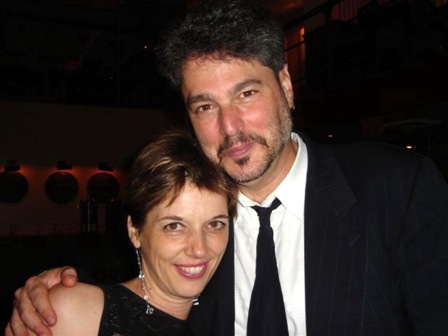
SR: Gabriele, why don’t you give us a little background on yourself as a singer.
Gabriele: I came to NY in 1988. I had a degree in education and a classical singing background. When I moved to NY, I started to get more involved in jazz. I worked as a jazz singer and while doing that, I was always interested in jazz and world music, I developed a large repertoire of Brazilian music and over the years I have developed that further. With our new CD, A Song of Love’s Color, we have a complete world approach.
SR: So singing foreign languages is not unique to you?
Gabriele: I speak German, English and some French. I do not speak Portuguese and Spanish but I have always done a repertoire that is in other languages.
SR: What made you decide this was the way you would shape this CD?
Gabriele: I enjoy singing standards but with this CD I wanted to feature Joe’s music and I also wanted to go in a different direction, feeling inspired by world music. I think it’s more me and feel I’ve come into my own as a person.
SR: I see that you are on the cover of Jazz Inside NY magazine, which is a popular jazz magazine in NYC. Would you consider your CD a jazz CD?
Gabriele: It’s a crossover CD. Everybody in the band performs jazz in its various forms. Improvisation is a major part of the CD, but it has an ethnic background. It’s world jazz and it’s vocal oriented.
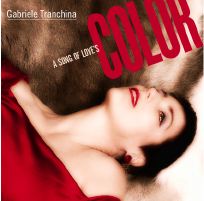
SR: Joe you are the piano player and composer of many of the tunes here. Would you consider this a collaborative effort even though the CD is under Gabriele’s name?
Joe: Yeah, we consider it a collaborative effort. I am the main composer on the CD – I wrote the music and the lyrics and I did a couple of settings and then I collaborated with Gabriele on writing additional music and lyrics for the Spanish lullaby “Duermete Niño Bonito,” and I collaborated with Bobby Sanabria and Renato Thoms on “Solamente Pasión.” But even having written and arranged all of that music, when presenting it to great musicians, especially in the jazz and latin world, the background that we all have, it becomes a collaborative sharing of ideas on how to play the music and expand it and take it in new directions. This band is not just a band that got together to record a CD, but one that has done a whole bunch of gigs together playing in Manhattan – so we were familiar with each other’s styles of playing.
SR: Tell us a little bit about your background as a musician?
Joe: My main instrument is acoustic piano, I also play electric keyboards and I have done gigs on Hammond B-3 organ as well.
SR: Who are some of the jazz people you’ve worked with?
Joe: It’s a long list, but for the sake of brevity, a few of the vocal highlights include Mark Murphy, Sheila Jordan, and Dakota Staton. Recently I’ve had the good fortune to twice play the Cape May Jazz Festival in New Jersey with Barbara King. I’ve also enjoyed playing with some great instrumentalists, including James Spaulding, Jimmy Heath, David “Fathead” Newman, Fred Wesley, and Dave Valentin. Accompanying the poetry of Abiodun Oyewole, one of the founding members of “The Last Poets,” and Golda Solomon, “The Medicine Woman of Jazz” was also quite enjoyable and inspiring. I also write poetry.
SR: When you heard the compositions in your mind, did you hear them as a world cross over thing or did you hear them as jazz tunes?
Joe: I compose in a lot of different styles. Thinking in terms of putting labels on music is something that is difficult for me, because when I’m writing, I’m basically writing music, and if it has a Brazilian influence or Salsa influence or Classical influence, it’s all music – it’s all a process of organizing sound.
SR: Gabriele, although this CD itself is inside the jazz world, it’s a world music type of CD. I use that definition because quite often people like to have an idea of what something is before they buy it. What are the challenges for jazz and is there a place to move forward with this?
Gabriele: I had stepped out of the jazz field because I don’t want to be put only in that category and I wanted to reach out to a wider audience. It’s important to me that I do good music instead of a specific genre. With my music, I like to reach out to a lot of different people and I like to deliver a positive message. I like my music to be uplifting.
SR: What do you think of the growing music scene in the area?
Gabriele: I’m very happy things are expanding. When we moved here, a bit over 8 years ago, I didn’t think of the scene in terms of being limited or needing growth. I only thought of this area as a scene that we wanted to be a part of. I immediately looked at the venues that were in this area and I went and approached the restaurant owners and club owne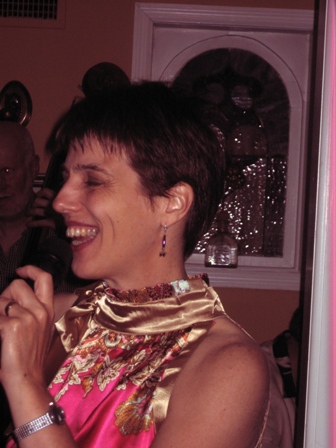 rs. I think that people in general were open and welcoming. For example, a few years ago we participated, both times that it ran, in the Brotherhood Wine and Jazz Fest, held at the Brotherhood Winery located in Washingtonville. It was a well-organized jazz festival with bigger headline names like Spyro Gyra and Gato Barbieri.
rs. I think that people in general were open and welcoming. For example, a few years ago we participated, both times that it ran, in the Brotherhood Wine and Jazz Fest, held at the Brotherhood Winery located in Washingtonville. It was a well-organized jazz festival with bigger headline names like Spyro Gyra and Gato Barbieri.
SR: It’s seems to be a nicely growing scene now. We have the Dautaj in Warwick, thanks to Ray Townly, whose been organizing weekly jazz at their venue. It’s becoming a place to play and hang for local musicians. Joe, you’ve performed with different people at various venues in this area as well. We have a growing circle of friends and musicians up here– Mark Egan, Adam Nussbaum, Freddie Jacobs, Jeff Ciampa, Rick Savage, and Richard Kimball, to name a few. This coming late summer/early fall there will even be a Warwick Jazz Festival You might be performing there as well.
SR: Is there any additional information regarding the CD or anything else that you want to speak to?
Joe: One of the main things about this CD is its presentation of a variety of languages and music from a variety of cultures. I have hopes that music such as this CD and world music in general will help bring people from all cultures together and unify people so that we can start celebrating all the things we have in common.
Gabriele: Along that line, our band consists of people from different places in the world and we work very well together. Where we come from, forms whom we are and that all comes together in our music - in a wonderful way. Personally I hope that we will be able to take the band on the road to tour. Jim Eigo, Jazz Promo Services, right here, handles our press promotion in Warwick, and Max Horowitz, Crossover Media, is handling our radio promotion.
SR: Gabriele, is there anything else that you would like to add?
Gabriele: In terms of advice, I would like to encourage musicians to go in the direction of their heart. Also, I have been inspired both by listening to and studying with others. For example, going to the Omega Institute and studying with Bobby McFerrin, helped me to expand my thoughts on how I do my songs. Discussing this with Joe expanded his ideas as well. Finally I’d like to add that if Jazz is to be a growing and developing art form, I think people need to start branching out into other areas and incorporating those ideas, rather than repeating the same music over and over.
SR: I think your CD has accomplished that.

Pilgrimage to Pacem in Terris
- Details
- Written by George L. Nitti George L. Nitti
- Category: Art and Photography Art and Photography
"However far you may walk, every pilgrimage is a safari into your own dark interior, an inner journey. For pilgrimages belong to the inner world, to that realm called "the religious." Frederick Franck, Art as a Way: A Return to Spiritual Roots

The life of Frederick Franck is well documented, but one that takes time to sift through, containing many layers, like any rich life. To unearth it, one must dig into the terrain of his world - carefully, slowly, persistently. His story, like any classic, never grows tired, as there is something new to discover upon each return.
On a midsummer’s day, I begin my pilgrimage to Pacem in Terris, a place that Frederick Franck and his wife Claske transformed into one of Warwick's crown jewels. Located off of Covered Bridge Road in Warwick, NY, Pacem in Terris, meaning "Peace on Earth" was a home fit to be condemned when first settled by the Franck's. Frederick writes in Pacem in Terris: A Love Story: "Contractors we consulted immediately diagnosed it as a terminal case, only fit to be torn down at once..." But instead of tearing down, Frederick and Claske rebuilt, resurrecting Pacem from the rubble with the help of a dutch carpenter named Bert Willemse.
Study Finds Village Cafe Good for Health
- Details
- Written by George L. Nitti George L. Nitti
- Category: Food & Wine Food & Wine
A study finds that hanging out in a village café might actually be good for your health and the health of our country.
Let me explain. It was after a morning slightly stressed from deadlines, immersed in work and the computer, when I realized I needed to breakaway. But where to go was a lingering concern. Admittedly, the computer was my addiction and there was an impulse to take it with me. I realized I hadn’t been out of the house in some time and I wasn’t sure how social I could be, like Rip Van Winkle waking from his twenty year snooze.
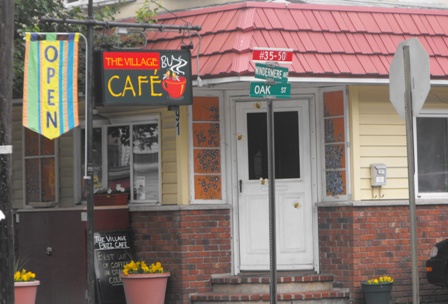 Getting out would be good for me, the stress in my shoulders more than I could bear. Plus we were all out of coffee at home and I needed my java kick. I got in my car and headed to main street, in downtown Greenwood Lake, wondering where I’d go, when I had an epiphany. Why not go to The Village Buzz Café, where I can get a cup of organic brew, a down home breakfast, some much needed socialization, and the exhilaration of doing something different.
Getting out would be good for me, the stress in my shoulders more than I could bear. Plus we were all out of coffee at home and I needed my java kick. I got in my car and headed to main street, in downtown Greenwood Lake, wondering where I’d go, when I had an epiphany. Why not go to The Village Buzz Café, where I can get a cup of organic brew, a down home breakfast, some much needed socialization, and the exhilaration of doing something different.
The proprietor of The Village Buzz Café, Jamie Heller, greeted me kindly when I arrived. She may have thought I was in a hurry, for on many days, when I entered her quaint coffee shop, I grabbed my coffee on the run, always eager to get myself to the next destination. I revealed that I was in no rush today. I just wanted to hang out. “Please make me a couple of eggs, bacon, toast and home fries at your leisure. I’m going to grab a cup of coffee.”

As I was looking for the paper cups, Jamie instructed me that she was encouraging people to drink from a mug. “Take a mug if you’d like. It’s better for the environment. I’ve cut down the paper waste in the store by half.” I grabbed a small mug with roses, preferring my coffee in a petite sized cup. 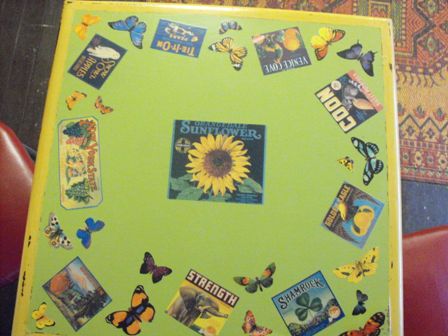 Maybe it was spring blossoming within me, maybe it was just the way I liked to take my coffee. It tasted better in the cup.
Maybe it was spring blossoming within me, maybe it was just the way I liked to take my coffee. It tasted better in the cup.
“It’s a beautiful day,” I said, holding the cup up, taking that first morning sip, talking to no one in particular and being heard by everyone. A guy at check out said, “that’s if you’re a duck.” It was drizzling outside. “Oh yeah, it’s raining,” I said. “I guess I must be a duck.”
The fun ensued, as I quacked my way around the store, with the gift of language my tool, the basis for which humans were uniquely constructed, the ability to communicate and express, an important means to commune – as natural as the duck takes to water.
 The hour unfolded rapidly and then the next. I read the newspaper, I looked around at the different tables, listened carefully to some offbeat blues, talked to Jamie about life on main street, the economy, her Yoga classes that she teaches on the side, before I ran into a friend, speculated about a hidden treasure in Greenwood Lake, and laughed at our trivial chit-chat.
The hour unfolded rapidly and then the next. I read the newspaper, I looked around at the different tables, listened carefully to some offbeat blues, talked to Jamie about life on main street, the economy, her Yoga classes that she teaches on the side, before I ran into a friend, speculated about a hidden treasure in Greenwood Lake, and laughed at our trivial chit-chat.
Funny that I should come across an article about the Actual Café in Oakland, California. They decided to turn off their wireless on weekends because it was interfering with the dynamic that makes a cafe a lively place, perhaps a dynamic built on conversation, meaningful or not, that ensues as a result of dialogue between human beings.
When I got home, I sat down to pen my little story, a parable of sorts, feeling that I had performed a very important study.
After many years of being away from my nuclear family, I returned home, because at the core of things, I came to understand that there was no replacing relationships that gathered in real, rather than virtual time. The phone couldn’t do it for me. Nor could any digital device. The hand gestures and voice inflections, the spontaneous give and take, the uncertainty and lack of control you may have over your environment, the hug and tender kiss of another human being, they all play a part in healing self and others. And sometimes even a good cry is the best medicine for an aching soul.
Maybe that’s why I find a coffee shop a good hang and place of well being. If the eggs don’t get you, a life of solitude just might.
The Village Buzz Cafe prides itself on its real, wholesome food. They only sell Fair Trade Organic Coffees by the cup or bag and draw on fresh produce and eggs that are supplied by local farmers. Catering is available. Their daily specials can be found by clicking here.
Hours: Mon - Friday 7 - 3 pm; Sat., 8 - 4 pm; Sunday, 8-2 pm
845 477 2145
Proprietors: Jamie Heller, Mary Comerford, Jean Zimmer
Jim Lord: A Hero's Journey Through Song
- Details
- Written by George L. Nitti George L. Nitti
- Category: Music Music

Jim Lord's story is a hero's journey—one fraught with obstacles as he has made his way through the world of song. Today his passion for making music is as strong as ever. I ran into Jim at Ask Tamara's Health Food Store in Warwick, and we sat down for some straight talk on music, art and his life.
Fine Arts, Finding Balance and Family Life with Artists Janet and Louis Fatta
- Details
- Written by ReeAnne Davies ReeAnne Davies
- Category: Art and Photography Art and Photography
Warwick artists Janet and Louis Fatta determined early on that they would pursue their passion parallel to their busy family life. Janet, a painter, and Louis, a metal sculptor, met at Pratt Institute as students, married, became parents, and with clear vision and a few faithful relatives and friends built a classic pole barn on their property to separate the crayons from the oils and the clothing iron from the anvil.
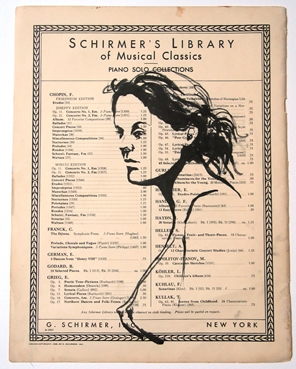 Janet works in the large loft space, where abundant northern light enters and falls on her canvases. The products of her skill and expertise are everywhere. When not giving lessons, she works in alternating mediums according to her mood on any given day. Subjects range from perfectly rendered nude charcoals to candy colored oil abstracts (inspired by a trip to the Museum of Natural History’s Cosmic Collision Space Show). Annual Christmas portraits of the extended family-- one all in shades of blue, a tribute to her appreciation of Picasso’s Blue Period, depict the large extended family’s poignant idiosyncrasies as they gather around the holiday table.
Janet works in the large loft space, where abundant northern light enters and falls on her canvases. The products of her skill and expertise are everywhere. When not giving lessons, she works in alternating mediums according to her mood on any given day. Subjects range from perfectly rendered nude charcoals to candy colored oil abstracts (inspired by a trip to the Museum of Natural History’s Cosmic Collision Space Show). Annual Christmas portraits of the extended family-- one all in shades of blue, a tribute to her appreciation of Picasso’s Blue Period, depict the large extended family’s poignant idiosyncrasies as they gather around the holiday table.
In the middle of the studio on a high stool, sits a lemon on a simply patterned plate. Its brilliant still-life likeness mirrors back from a nearby easel. When asked, “Why a lemon?” she recalls the bagful that she bought but couldn’t use up. Then with a nod to creative license she shrugs, “Because it was there. And I like lemons.” Janet’s talent is at once bold, yet sweetly unsung.
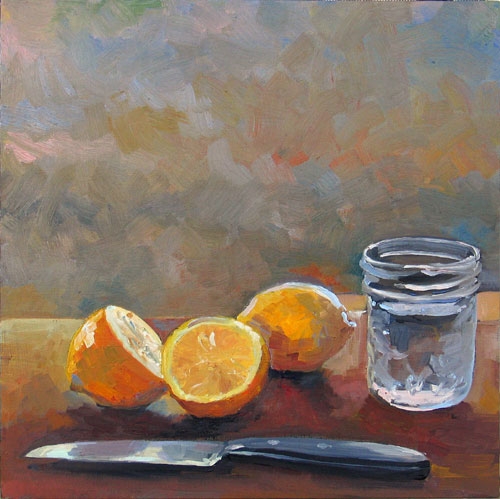
In addition to the routine interruptions these two dedicated artists face as parents, they admit that it is a challenge to contend with each other’s coveted time in the studio. They must constantly defer to fairness as one takes up house duty while the other grabs a block of time in the studio. They smile in agreement about the tension, but there is no complaining. They are obviously at peace with their choices.
Louis is an art teacher in Rockland County by day, and an actively working sculptor at every other available opportunity. The barn’s ground level is his domain. It sports its original hard packed dirt floor and in the center, tool of his trade, a welding machine. The doors face the woods and not fifty feet out, a steep ravine drops down to a noisy little brook. Many of his pieces are scattered around outside, seemingly by random among overgrown grasses, weeds and trees. Pitted by rust and weather, they appear at home: vestiges of urban energy juxtaposed with shapes of nature, like omens for seeing eyes. As Fatta explains his artistic objectives it becomes clear that the apparent randomness is intended-- implying man’s cavalier footprint on a vulnerable earth.
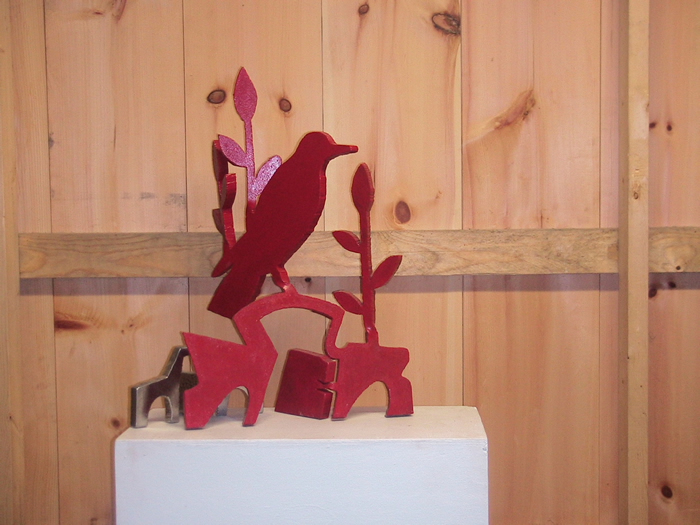
Fatta chooses a few profoundly representative shapes including the automobile, the raven and the ant, stacked in varied combination, as totems to humanity’s heedless stamp and nature’s relentless capacity to compensate. Cut in minimal silhouette, their relationships become intuitively apparent. The automobile, catapult to the industrial revolution. The raven, scavenger/sentinel. The ant, carrion consumer. Wrought in welded steel they stand, mute tattletales on civilization’s successes and its sins.
One of Fatta’s major influences is Romanian sculptor Constantin Bancusi, whose non-literal representations reflect “… not the outer form but the idea, the essence of things…” and the impossibility “for anyone to express anything essentially real by imitating its exterior surface.” This ideology shows up for instance, in the semi circle spaces where wheels would fit under cuts that form the automobile bumpers. No motion here. Just the mind of motion. Or again, in the relatively realistic ant set on small garage door wheels. Ants don’t skate. But they don’t stop either. Like commuters in cars.
As recurring imagery is manipulated, new images are introduced, such as a rectangular skyscraper among tall wavy weeds. And new messages of growth, decay, recovery and resolution materialize.This layering and reworking is a little like Janet and Louis and their kids and their dog. Only their skyscraper looks like a pole barn. Their car is an SUV. And you might find a few ants among the cookie crumbs on the counter. All a cheerful totem to the grounded artist’s life.
ReeAnne Davies is a freelance writer, having worked in educational publishing for many years, in both editorial and administrative positions. A mother of five, she can be found reading contemporary literature, hiking the Appalachian Trail, studying ancient scripture or pondering the direction of American culture and politics. ReeAnne can be reached via email at This email address is being protected from spambots. You need JavaScript enabled to view it..

